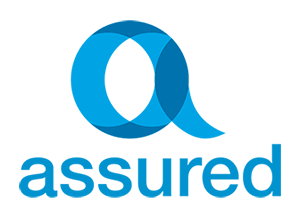Lenders’ mortgage insurance could be the key to helping thousands of homebuyers purchase their dream home each year. Borrowers who don’t have a large deposit can still get into the property market, as long as they’re willing to pay a lenders’ mortgage insurance premium.
Many home buyers incorrectly assume that the lenders’ mortgage insurance premiums they pay will protect them. They mistakenly believe the lenders’ mortgage insurance premium they’ve paid means they’re somehow covered if they encounter financial hardship.
In reality, the premium paid covers the lender against the risk of you defaulting on your loan.
What is lenders’ mortgage insurance?
Lenders’ mortgage insurance (LMI) is a policy designed to protect the bank against the potential risk of lending money to a person. When a bank approves a mortgage application, they assess their risk of not being able to get their money back if the borrower defaults on repayments.
The bank can use the property as collateral security, but if the property declines in value, the security amount might not be enough to repay the outstanding loan amount if the lender tries to sell it.
Traditionally, banks and financial institutions require borrowers to have a deposit that is at least 20% of the property purchase price. Having a larger deposit provides the bank with some assurance that they’re more likely to get their money back if the borrower defaults.
However, if you have a smaller deposit amount, the bank faces a larger potential risk. Lenders choose to protect themselves against that risk by taking out a lenders’ mortgage insurance policy.
Who needs to pay lenders’ mortgage insurance?
Any home buyer borrowing more than 80% of the property purchase price will need to pay an LMI premium. Many banks and financial institutions will allow customers to borrow up to 95% of the purchase price, which is ideal for first home buyers who may not have a large deposit yet.
However, some borrowers might be considered a slightly higher risk to the banks. For example, some self-employed borrowers may be required to pay LMI premiums for borrowing more than 60% of the property value.
How much does lender’s mortgage insurance cost?
Each borrower’s LMI premium will vary, depending on a range of factors. Australia’s two big mortgage insurance providers, Genworth Financial and QBE LMI also use a sliding scale to determine the premium amounts charged that takes into account the amount of money being borrowed and the size of the deposit.
There are also some financial institutions that may differentiate between an owner-occupied property you intend to live in and an investment property you intend to rent out. Premium calculations may also vary between different states.
So a person borrowing 85% of the property value may pay a smaller premium than someone borrowing up to 95% of the property value. The amount you pay on your LMI premium may also vary depending on which mortgage insurer your bank uses.
It’s possible to avoid paying an LMI premium by keeping the loan-to-value below 80%. For many people, that could mean spending longer trying to save a bigger deposit and potentially putting off getting into the real estate market until later.
However, if you don’t have sufficient equity or a large enough deposit to cover the 20% needed, there are times when paying the LMI premium can provide a range of benefits.
Many banks will allow you to borrow up to 95% of the purchase price of a property. So if you have a small deposit ready to go you could get started in the property market sooner and avoid the risk of paying higher property prices in the future.




